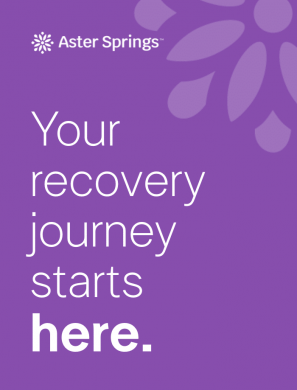Eating disorders are serious mental health issues affecting millions of people worldwide. While many people are aware of the most common eating disorders, such as anorexia and bulimia, many are also unaware that multiple eating disorders can be present in a single individual at one time.
Common Eating Disorders That Can Coexist
It is entirely possible for a person to have more than one eating disorder. For example, an individual may have anorexia and bulimia simultaneously. Research suggests that these two disorders tend to overlap most frequently. Other conditions that coexist with anorexia or bulimia include binge-eating disorder and avoidant/restrictive food intake disorder (ARFID). Additionally, individuals may have an eating disorder and a co-occurring mental health disorder such as depression, anxiety, or obsessive-compulsive disorder. These are sometimes referred to as comorbid eating disorders (1).
Signs of Having Multiple Eating Disorders
The signs and symptoms of different eating disorders are often very similar, so it can be tricky to spot when a person suffers from more than one. Those who suffer from more than one eating disorder often show signs such as harmful behaviors around food and body image. These symptoms may include an intense fear of gaining weight, obsessing over calories, frequent binging and purging, or the need for excessive exercise. People suffering from multiple eating disorders may also experience mood swings, depression, and anxiety.
Diagnosis for Multiple Eating Disorders
Mental health professionals use The Diagnostic and Statistical Manual of Mental Disorders (DSM-5) as a clinical tool to define, diagnose, and treat individuals suffering from mental health illnesses, including eating disorders. The manual provides criteria for diagnosing someone suffering from a specific eating disorder. It’s normal to want to know where you fit into the spectrum of eating disorder diagnoses. However, eating disorders are varied and don’t always fit into a neat category. They can shift over time, and you may have any combination of symptoms and behaviors at any given time.
The DSM-5 classifies eating disorders with overlapping symptoms as Other Specified Feeding or Eating Disorders (OSFED), formerly known as Eating Disorder Not Otherwise Specified (EDNOS). Some examples of OSFEDs include the following (2):
- Atypical Anorexia Nervosa: The person meets the criteria for anorexia nervosa, except their weight is within the normal range.
- Bulimia Nervosa (of low frequency and/or limited duration): The individual meets the criteria for bulimia nervosa, except that binge eating and compensatory behaviors occur less than once a week or for less than three months.
- Purging Disorder: Individuals experience recurrent episodes of purging behavior to influence weight without binge eating.
Overall, it doesn’t matter which symptoms or behaviors are happening simultaneously. The most important thing is to get help as soon as you can.
Treatment Options for Multiple Eating Disorders
Because there are many similarities between eating disorders, treatment focusing on symptoms and behaviors is critical and will help individuals suffering from multiple disorders to achieve successful recovery. Regardless of your diagnosis or eating disorder, a mental health professional will work with you to create a treatment plan tailored to your needs. This plan may include medications, psychotherapy, nutritional counseling, and other types of treatment.
How to Get Help for Multiple Eating Disorders?
Regardless of the causes of eating disorders or the co-occurring conditions that are present, getting help is vital, and the sooner you seek services, the better. Getting the right treatment for your eating disorder (or eating disorders) can prevent severe physical and psychological complications.
If you or someone you know is exhibiting signs of an eating disorder, seeking help from a mental health professional is essential to get the appropriate diagnosis and treatment. At Aster Springs, our multidisciplinary team of professionals will provide comprehensive treatment to address your or your loved one’s needs effectively. Find the location nearest you to get the help you need today.
References
- David J. Dorer, D.J., Franko, D.L., Tahilani, K., Thompson-Brenner, H., Herzog, D.B., Eddy, K.T. (2008, February 1). Diagnostic crossover in anorexia nervosa and bulimia nervosa: Implications for DSM-V. The American Journal of Psychiatry. https://ajp.psychiatryonline.org/doi/full/10.1176/appi.ajp.2007.07060951
- BodyMatters Australasia. (n.d.). DSM-V diagnostic criteria for eating disorders. https://bodymatters.com.au/wp-content/uploads/2015/01/DSM_V_Diagnostic_Critera_for_Eating_Disorders.pdf
Author Bio:
Kate Delaney Chen, BSN, RN-BC is a healthcare writer and registered nurse with over 17 years of bedside experience. She specializes in Psychiatric Nursing and Nephrology and currently works at a nationally recognized Inpatient Eating Disorders Program.



